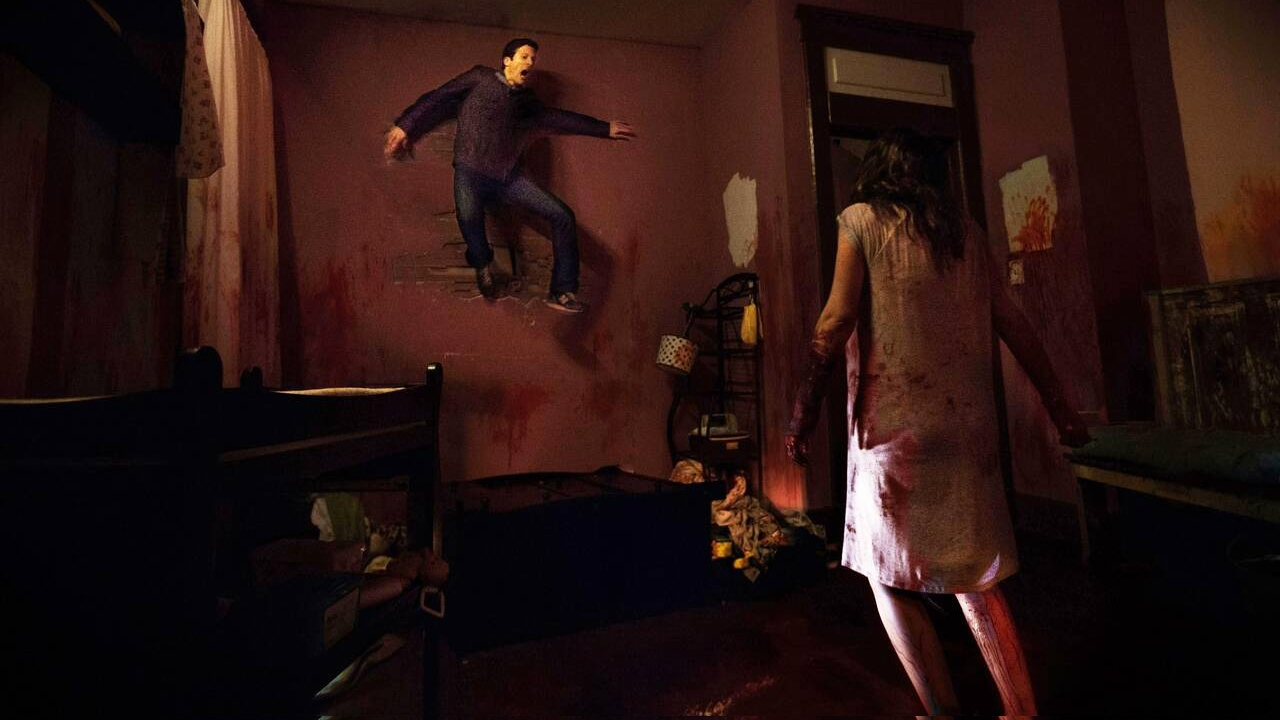Movies
‘Venom 3’ Delayed to November 2024

Tom Hardy will be back as Venom in Sony’s upcoming Venom 3, and we’ve learned this week that the upcoming sequel has been slightly delayed from its previous release date.
Originally scheduled for July 12, Venom 3 will now release in theaters on November 8, 2024.
Chiwetel Ejiofor (Doctor Strange) and Juno Temple (“Ted Lasso”) will star.
Venom and Venom 2 writer Kelly Marcel will be directing the third movie.
In addition to writing, Kelly Marcel also produced the first two Venom movies. She’s on board to produce Venom 3 as well, and Marcel also wrote the screenplay for the new film.
Deadline reports, “Plot details are unknown other than Hardy returning as the lethal protector Venom following the first two films grossing a combined $1.36 billion worldwide at the box-office. It is also unknown who will be joining Hardy from previous films or if any characters from the Sony Pictures Universe of Marvel Characters will be joining the film.”
Ruben Fleischer directed Venom, with Andy Serkis directing Venom: Let There Be Carnage. The 2021 sequel saw Tom Hardy’s Venom do battle with Woody Harrelson’s Carnage. The sequel also made it clear that these Venom movies are taking place within the larger Marvel Cinematic Universe, so we expect to see some more connections in the upcoming third movie.
Avi Arad, Matt Tolmach, Amy Pascal, and Hutch Parker are also producing Venom 3.

Editorials
‘Devil’s Due’ – Revisiting the ‘Abigail’ Directors’ Found Footage Movie

Expectations can run high whenever a buzzworthy filmmaker makes the leap from indie to mainstream. And Radio Silence — Matt Bettinelli-Olpin, Tyler Gillett, Chad Villella and former member Justin Martinez — certainly had a lot to live up to after V/H/S. This production collective’s rousing contribution to the 2012 anthology film not only impressed audiences and critics, the same segment also caught the attention of 20th Century. This led to the studio recruiting the rising talent for a hush-hush found-footage project later titled Devil’s Due.
However, as soon as Radio Silence’s anticipated first film was released into the wild, the reactions were mostly negative. Devil’s Due was dismissed as a Rosemary’s Baby rehash but dressed in different clothes; almost all initial reviews were sure to make — as well as dwell on — that comparison. Of course, significant changes were made to Lindsay Devlin’s pre-existing script; directors Bettinelli-Olpin and Gillett offered up more energy and action than what was originally found in the source material, which they called a “creepy mood piece.” Nevertheless, too many folks focused on the surface similarities to the 1968 pregnancy-horror classic and ignored much of everything else.
Almost exactly two years before Devil’s Due hit theaters in January of 2014, The Devil Inside came out. The divisive POV technique was already in the early stages of disappearing from the big screen and William Brent Bell’s film essentially sped up the process. And although The Devil Inside was a massive hit at the box office, it ended up doing more harm than good for the entire found-footage genre. Perhaps worse for Radio Silence’s debut was the strange timing of Devil’s Due; the better-received Paranormal Activity: The Marked Ones was released earlier that same month. Despite only a superficial resemblance, the newer film might have come across as redundant and negligible to wary audiences.

Image: Allison Miller in Devil’s Due.
The trailers for Devil’s Due spelled everything out quite clearly: a couple unknowingly conceives a diabolical child, and before that momentous birth, the mother experiences horrifying symptoms. There is an unshakable sense of been-there-done-that to the film’s basic pitch, however, Bettinelli-Olpin and Gillett knew that from the beginning. To compensate for the lack of novelty, they focused on the execution. There was no point in hiding the obvious — in the original script, the revelation of a demonic pregnancy was delayed — and the film instead gives the game away early on. This proved to be a benefit, seeing as the directors could now play around with the characters’ unholy situation sooner and without being tied down by the act of surprise.
At the time, it made sense for Radio Silence’s first long feature to be shot in the same style that got them noticed in the first place, even if this kind of story does not require it. Still and all, the first-person slant makes Devil’s Due stand out. The urgency and terror of these expectant parents’ ordeal is more considerable now with a dose of verisimilitude in the presentation. The faux realism makes the wilder events of the film — namely those times the evil fetus fears its vessel is in danger — more effective as well. Obviously the set-pieces, such as Samantha pulling a Carrie White on three unlucky teens, are the work of movie magic, but these scenes hit harder after watching tedious but convincing stretches of ordinariness. Radio Silence found a solid balance between the normal and abnormal.
Another facet overlooked upon the film’s initial release was its performances. Booking legitimate actors is not always an option for found-footage auteurs, yet Devil’s Due was a big-studio production with resources. Putting trained actors in the roles of Samantha and Zach McCall, respectively Allison Miller and Zach Gilford, was desirable when needing the audience to care about these first-time parents. The leads managed to make their cursory characters both likable and vulnerable. Miller was particularly able to tap into Samantha’s distress and make it feel real, regardless of the supernatural origin. And with Gilford’s character stuck behind the camera for most of the time, the film often relied on Miller to deliver the story’s emotional element.

Image: Allison Miller in Devil’s Due.
Back then, Radio Silence went from making viral web clips to a full-length theatrical feature in a relatively short amount of time. The outcome very much reflected that tricky transition. Bettinelli-Olpin and Gillett indeed knew how to create these attention-grabbing scenes — mainly using practical effects — but they were still learning their way around a continuous narrative. The technical limitations of found footage hindered the story from time to time, such as this routine need to keep the camera on the main characters (or see things from their perspective) as opposed to cutting away to a subplot. There is also no explanation of who exactly compiled all this random footage into a film. Then again, that is an example of how the filmmakers strove for entertainment as opposed to maintaining every tradition of found footage. In the end, the directors drew from a place of comfort and familiarity as they, more or less, used 10/31/98 as the blueprint for Devil’s Due’s chaotic conclusion. That is not to say the film’s ending does not supply a satisfying jolt or two, but surely there were hopes for something different and atypical.
Like other big film studios at that time, 20th Century wanted a piece of the found-footage pie. What distinguished their endeavor from those of their peers, though, was the surprising hiring of Radio Silence. Needless to say, the gamble did not totally pay off, yet putting the right guys in charge was a bold decision. Radio Silence’s wings were not completely clipped here, and in spite of how things turned out, there are flashes of creativity in Bettinelli-Olpin and Gillett’s unconventional approach to such a conventional concept.
Radio Silence has since bounced back after a shaky start; they participated in another anthology, Southbound, before making another go at commercial horror. The second time, as everyone knows, was far more fruitful. In hindsight, Devil’s Due is regarded as a hiccup in this collective’s body of work, and it is usually brought up to help emphasize their newfound success. Even so, this early film of theirs is not all bad or deserving of its unmentionable status. With some distance between then and now, plus a forgiving attitude, Devil’s Due can be seen as a fun, if not flawed first exposure to the abilities of Radio Silence. And, hopefully, somewhere down the line they can revisit the found-footage format.

Image: Allison Miller and Zach Gilford in Devil’s Due.













You must be logged in to post a comment.